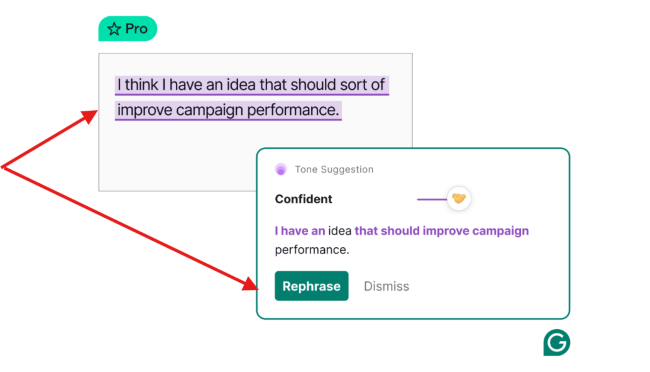Last Updated on November 1, 2024 by Emmanuel

Starting a profitable business online can be challenging, especially for beginners who need to master online marketing’s ins and outs to get the most out of this industry’s opportunities.
The major challenge that many online marketers face after having designed their websites or online stores with the best web builders is to generate organic traffic to make their offers viral on the Internet.
Thus, we feel compelled to share an in-depth guide on how to get free traffic on your website with copywriting; this free online advertising method takes time to produce results but you reap the fruits of your effort for years without additional investment.
Table of Contents
Copywriting and Organic Traffic.
What is Copywriting?
You don’t become a copywriter overnight because writing reliable content requires knowing your target audience’s needs and how to satisfy them, engage, and retain them.
Website visitors like interacting with persuasive content to commit to your offers; purchasing products and services, subscribing to your mailing list, or whatever else.
Avoid believing that copywriting is limited to encouraging visitors to buy your offerings; highlight your understanding of their niche market needs and propose the best solutions to satisfy them through your content.
Besides, your content must be SEO-friendly to generate organic traffic allowing yiur site to become viral on the search engines’ first pages.
Copywriting vs Website Traffic.
Writing engaging content benefits your audience in many ways, including:
- Click-through rate (CTR): Well-written titles and meta descriptions optimize your content in search engine results and social networks.
- User engagement: SEO optimization engages your site users to stay longer reading your blog posts resulting in lower bounce rates.
- Social sharing: the more readers like your articles, the more they can share them with others through social networks to increase your referral traffic.
Understanding your target audience’s needs is essential to writing suitable blog posts and increasing engagement with your site.
You might also want to check the 10 best web builders to create your small business’s online presence.
Headlines Optimization.
The Power of Headlines.
Potential visitors to your website first interact with the published content titles to decide if it is worth continuing reading so consider this essential aspect carefully.
Eight out of 10 people who read blog posts in search engines like Google, Bing, and Yahoo would first read the title before engaging with the rest of the content or abandoning it hence the interest in using compelling titles.
Choose compelling and SEO-friendly titles that attract your audience and convince them to read the offers you are proposing to them through your content.
Headline Formulas.
Convincing and optimized headline formulas for search engines increase your website’s click-through rates, as the following examples outline:
Headlines that start with “How to” tend to attract readers searching for the most appropriate solutions to their problems.
For example, you can write an article titled “How to Promote Affiliate Products Online for Free” as many people search for these tutorials.
Also, many web visitors search the internet for articles titled “10 Tips for Writing Content That Increases Traffic to Your Website.”
These are just a few examples to encourage your site’s readers to engage with your offers; platforms like Wealthy Affiliate teach every aspect of online marketing from scratch until you become an industry expert so don’t miss out on checking it.
Keyword Integration.
Also, learn to find keywords with high traffic volume and less competition to include in your content titles for good SEO.
For example, new content writers looking for free tips to drive traffic to their websites will love articles with titles like “How to Write Content That Drives Lots of Free Traffic to Your Website”.

Emotional Triggers and A/B Testing.
SEO experts agree that emotional words like “proven”, “free”, “ultimate”, etc. attract your readers’ curiosity resulting in the title performance improvement.
For example, you can tithe your content “The Ultimate Guide to Boosting Organic Traffic to Your Website for Free” to attract a valuable audience provided other content writers haven’t already picked it since the competition on the web is high.
Besides, headline A/B tests help to create different versions of a title to check which ones generate significant organic traffic and more clicks.
SEO-Friendly Meta Descriptions.
What is a Meta Description?
A meta description is a few paragraphs you place below your content title that will appear in search engine results as an introduction.
Thus, write your meta description properly to encourage many visitors to read your blog post, improve its CTR, and contribute to your website’s best SEO ranking.
Why Do Meta Descriptions Matter for Site Ranking?
The meta description tells your readers what to expect when reading your content; make it clear and engaging so they read it from start to finish.
Most of those who engage with your blog posts will likely click on the offers if they can solve their problems.
Tips for Writing Compelling Meta Descriptions.
- Limit your meta description to less than 160 precise characters to prevent search engines from truncating and showing readers a small part.
- Meta descriptions must include your main keywords or the phrases people search for in search engines to make blog posts relevant to the reader’s eyes.
- Your meta description should also reflect the intent of the entire content to avoid distortions and disappointing readers.
Also, web developers can check the Bubble platform enabling them to create their best applications without coding skills.
Writing engaging blog content requires the following tips.
Write for Your Audience.
First, examine your target audience’s needs or problems they face to write content providing suitable solutions.
Web readers typically look for blog posts that address their interests rather than the writers’, so give them what they expect from you.
- Write blog articles that attract the recipients’ attention.
- Identify the problems that your audience faces to offer appropriate solutions.
- Encourage your readers to take action (CTA): check your offerings to buy them, subscribe to your mailing list, share your content, etc.
Clear and Persuasive Language.
Simple language without unnecessary jargon or complicated words empowers your audience to understand the message you share with them.
- A clear and conversational tone helps your audience better understand the text you share with them.
- Case studies, hypothetical scenarios, and other storytelling make your content relevant for the recipients.
- Sharing your articles on social networks can make them viral on the web so use calls to action.
- Videos, images, statistical data, relevant information, and other visual elements make your content more understandable and shareable.
Compelling Calls-to-Action (CTAs).
What is a CTA?
A call to action (CTA) is a short text that encourages your readers to take a specific action such as signing up to your mailing list, clicking on a button to check out your offer, sharing your content with others, etc.
Place your CTA strategically in the content to engage your website visitors resulting in increased search engine organic traffic.
==> Check the top twenty tech devices families in the United States and other countries who can’t part with for their daily living.
Placing CTAs in Your Content?
You can place CTAs in various content areas such as at the beginning to encourage visitors to take action without reading the entire article.
Many content writers also place CTAs in the middle of the text to let readers first digest a good part of the message addressed to them before taking action.
Finally, you can wait for your visitors to read the entire content before inviting them to take action. It all depends on your preferred strategy; choose what yiu feel comfortable with.
- Visual CTAs are short and precise texts placed in colored buttons to be straightforwardly spotted in content.
- Your CTAs must create a sense of urgency among your readers.
For example, you can use short sentences like “Limited Time Offer”, “Check Now”, etc. to attract the readers’ attention and encourage them to act without many thoughts.
Internal and External Linking.
This SEO technique known as “backlinks” requires pointing in your content the links from other websites that search engines consider authoritative and that from your website.
Internal and external links improve the site’s authority in search engines over time to gain rankings on their first pages and increase organic traffic.
Also, other content creators can refer to your website’s links if they find your content useful so write them carefully to gain such backlinks but it doesn’t happen overnight.

Repurposing Your Content.
This strategy involves adapting part of your blog posts to different formats or platforms and distributing them to a wider audience to boost your organic traffic.
- For example, you can post your content key points on social networks like Facebook or Instagram which have millions of visitors daily.
- Many online marketers also post messages on Twitter (X) to their subscribers, some of whom replicate them, which can make their content go viral on the web.
- Transform your blog posts into short content and distribute them as email newsletters with links sending readers back to your site.
- Post short videos on popular social networks like Instagram, TikTok, or YouTube with links that send people to your website for detailed information.
Keeping Visitors Engaged.
An easy-to-read blog post encourages your site visitors to stay long enough to digest the information provided to them if it is useful.
It also reduces the bounce rate on your site to improve its SEO ranking, organic traffic, blog post sharing and they may read your other pages.
The following techniques make your blog posts straightforward to read:
- Short paragraphs that do not overwhelm readers to lose the ideas thread.
- Lists and bullet points to aid in understanding the message you share or points discussed.
- Conversational tones show that you are a human who cares about your audience’s problems and how they can solve them correctly.
- Subheadings or sections help readers to navigate and understand your content better.
Also, free platforms like Hemingway and Grammarly help refine your content by correcting spelling and grammatical mistakes.
The downside is you only use the basic tools while the premium ones require subscriptions; see what suits you better.

Final Thoughts.
That’s what we can tell about how to get organic traffic on your website for free with content copywriting; we hope you will find this blog post helpful.
Don’t fall into the tarps of malicious online marketers who promise to show you easy ways to earn money online because there aren’t such shortcuts.
Also, know that content marketing takes time to produce significant results so commit and be patient to crafting original SEO content to meet your target audience’s needs.
Leave a Reply